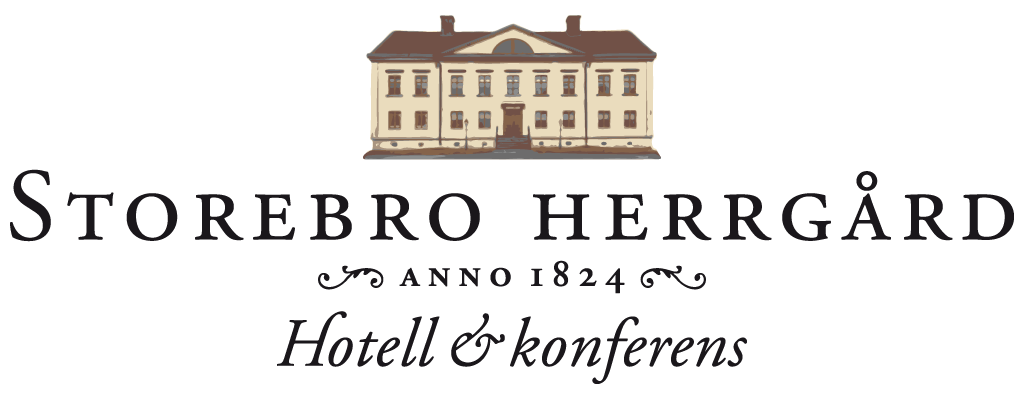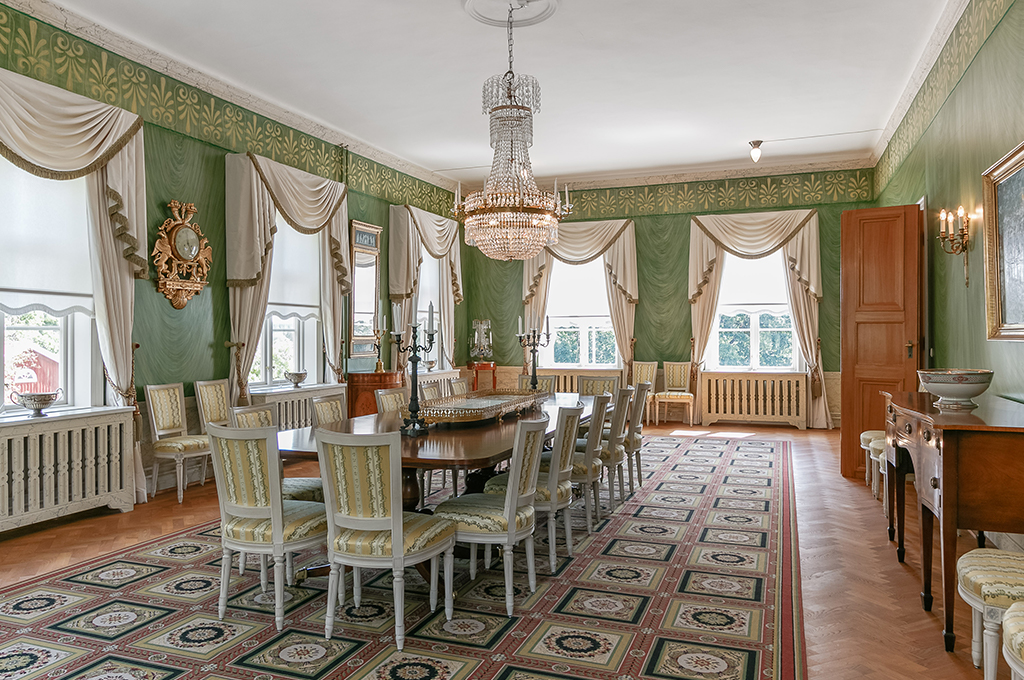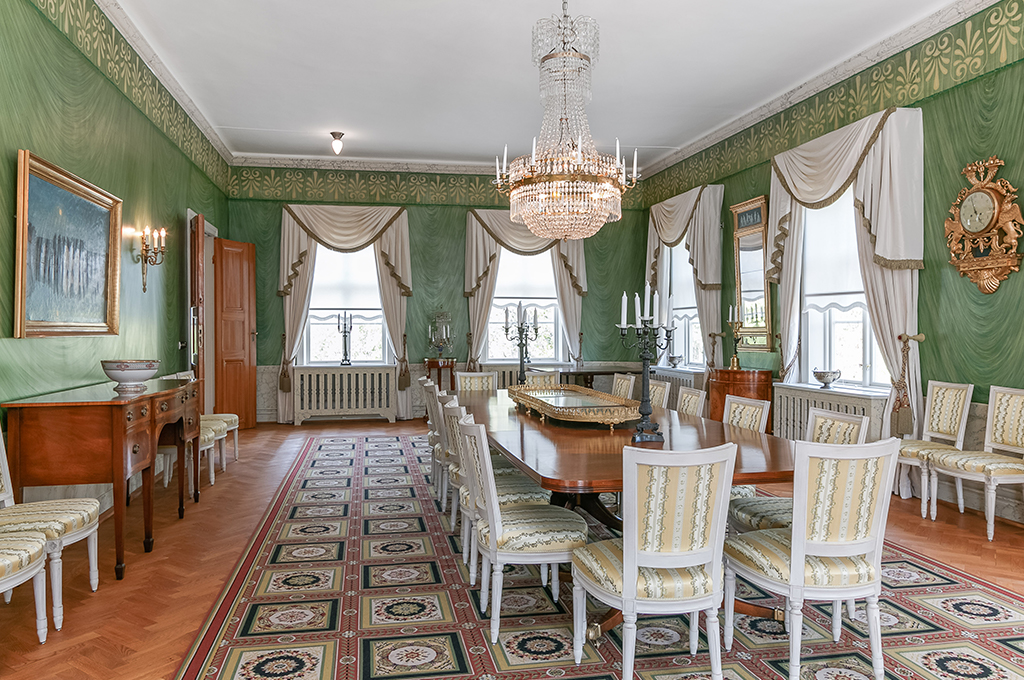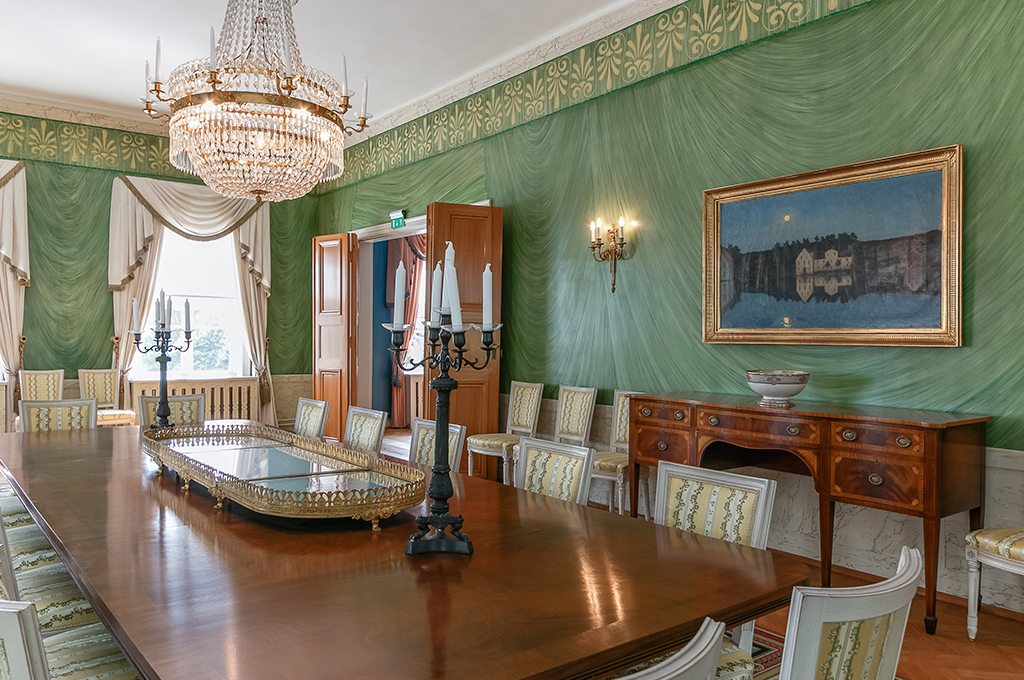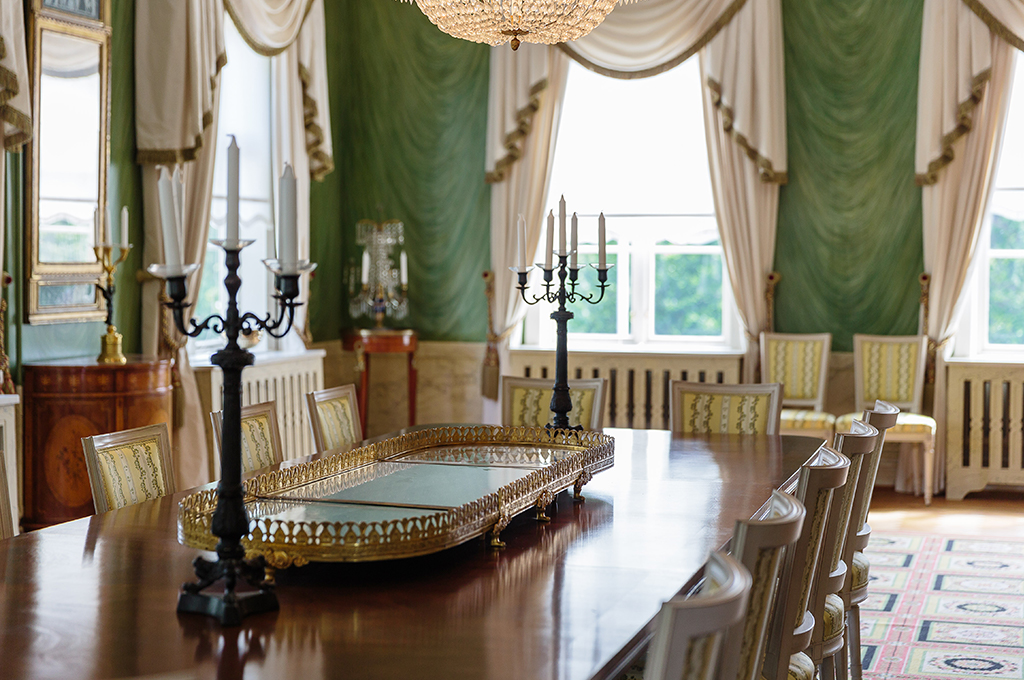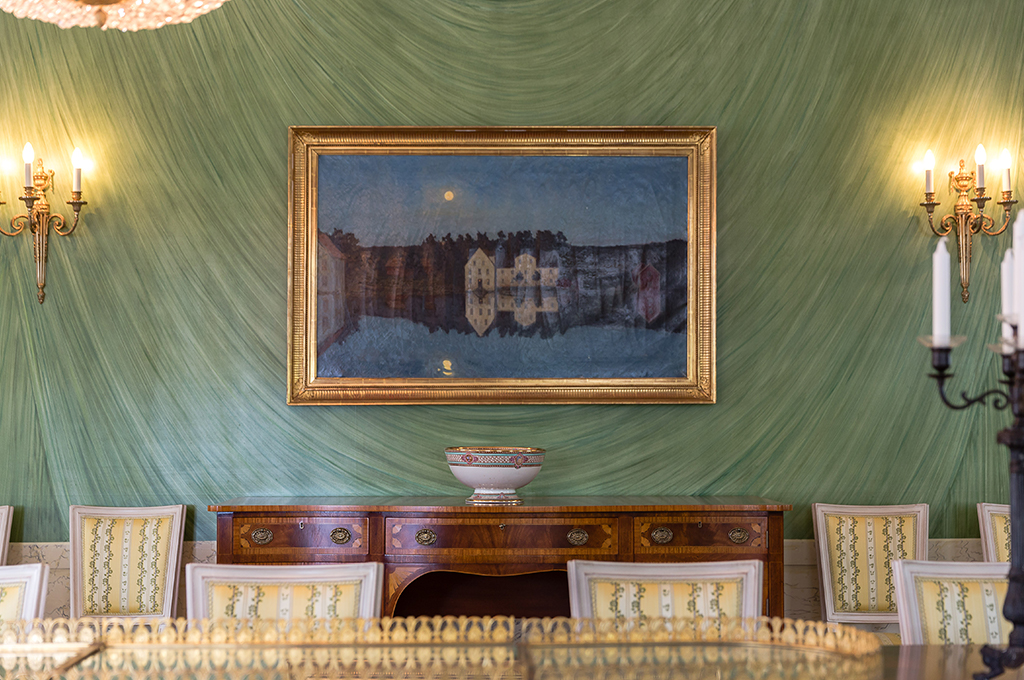Dining room
The walls were painted to make it look like fabric. The point of this in the 19th century was to recreate the atmosphere of Roman war tents. The tent was an interior detail that broke through strongly in more noble circles.
In the circle around the court, however, the walls were draped with real silk fabric. It was both expensive and impractical. A less costly way to give fabric feeling was to paint the walls so that it looked like fabric that was then crowned with typical palmet tables.
In the dining room there is a Gustavian crystal chandelier and a beautiful gilded wall clock in empiric style. The room is also decorated with two late Gustavian couple mirrors.
In the middle of the table is a burnt table plateau. The plateau was used as decoration and was also a good coaster for, for example, exotic fruits. It was another way of showing off their prosperity.
The rug is newly woven from the emir. The tight symmetrical routine sharing was the highest fashion during the empiric style and during that period had begun to machine weave carpets and fabrics.
Around the English mahogany table, with pillar feet shaped after the English King William IV idiom, there is room for 24 seated people.
